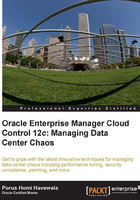
Chapter 3. Ease the Chaos with Performance Management
There are normally numerous applications running in a data center. These applications often impact the database in different ways at different times, and no application or database ever stays static; there is continuous change.
The data in the database changes as time goes by with more volumes of data being added or with continuous updates, deletions, and inserts. Application users also change in terms of more and more users and the application code itself changes with periodic application upgrades that add more functionality to the applications.
Consequently, with all these changes, the database performance is bound to deteriorate sooner or later and the DBA will always be forced to look into performance issues at the database layer.
As per the IOUG Survey on Database Manageability in 2011, 90 percent of DBAs mentioned that they had experienced unplanned downtime due to database changes not having been properly tested, and as a result over 50 percent of DBAs said that they avoid making changes to production because of these changes negatively impacting performance.
The question is, how do we guarantee the performance of the application? How do we make sure that what works today is going to work in the same way tomorrow? If performance can't be guaranteed, the data center degenerates to a day-to-day fire-fighting operation, where DBAs are even called up in the middle of the night if reports take longer than usual. This guaranteeing of the application performance is often the top concern in the minds of many IT managers and application managers.
The answer is Oracle Enterprise Manager. The new version of Cloud Control 12c has powerful features for diagnosis of database issues, complemented with tuning capabilities for most of the issues found. The diagnosis and tuning is a carry-on from the previous versions of Enterprise Manager; however, the capabilities have been considerably advanced, as we will see shortly.